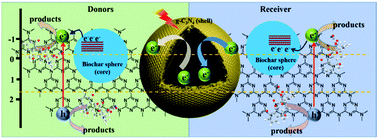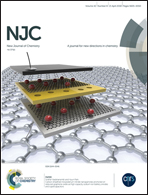A two step hydrothermal process to prepare carbon spheres from bamboo for construction of core–shell non-metallic photocatalysts†‡
Abstract
This work reports the direct transformation of the biomass of bamboo into carbon spheres by two step hydrothermal carbonization (HTC) at 180–200 °C. Such carbon spheres have potential applications as electrode materials with excellent electrical conductivity and high chemical stability. The biochar spheres (BS) were modified via protonation of g-C3N4 to form non-metallic photocatalysts with a unique core–shell architecture. In the BS@g-C3N4 core–shell photocatalysts, the protonated g-C3N4 sheets were the main photocatalyst and the biochar spheres acted both as a reservoir and a sensitizer, and displayed outstanding light absorption in nearly the entire wavelength range, due to the narrower gap of the sp2 carbon cluster and large amounts of carbon clusters. Conversion of raw biomass into stable carbon materials under relatively mild conditions offers a promising route to overcoming the challenges in obtaining biochar materials with precisely controlled morphology. Building a green non-metallic photocatalyst is an environmentally friendly embodiment of this.



 Please wait while we load your content...
Please wait while we load your content...